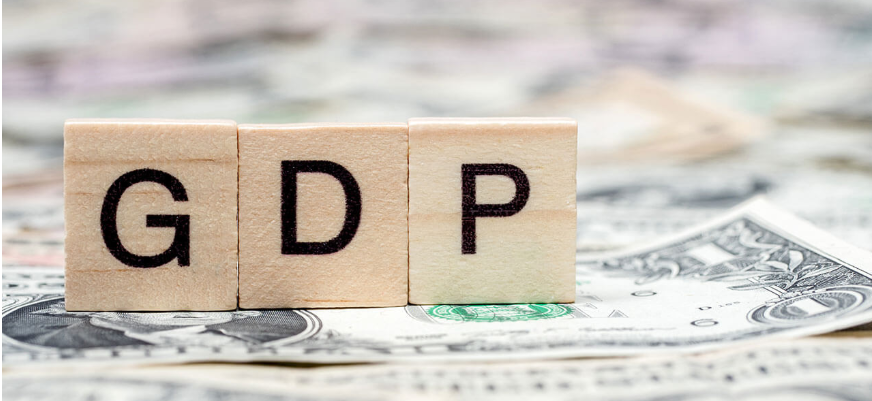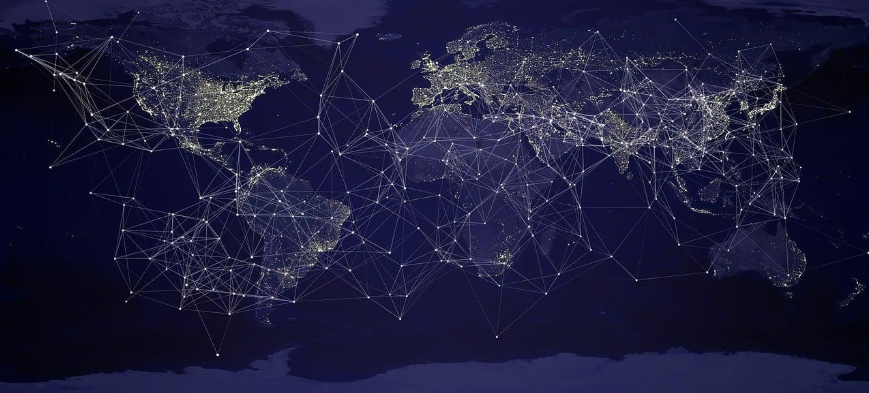WGU D199 OA Study Guide - 2025 | Navigating the World of Growth, Grids, and Global Agreements📖
Hello and welcome to the complex and mysterious realm best known as ‘’the economics of energy and environment’’. This article takes you on an enlightening journey through three critical topics:
- How HDI and GDP Are Measured: Human Development Index (HDI) evaluates a country’s development based on health, education, and income, while Gross Domestic Product (GDP) measures economic performance by calculating the total value of goods and services produced.
- Smart Grid vs. Electric Grid: A traditional electric grid distributes electricity passively, while a smart grid integrates digital technology, automation, and real-time data to improve efficiency, reliability, and energy management.
- Kyoto, Montreal, and Paris Agreements: These international treaties address environmental challenges—Kyoto Protocol set emission reduction targets, Montreal Protocol phased out ozone-depleting substances, and Paris Agreement focuses on global climate action and sustainability.
Why should you care? Well, imagine trying to bake a cake without a recipe (like trying to answer WGU D199 OA questions), cook it in a temperamental oven, and then argue with your friends about the right frosting—that’s what managing countries and climate change feel like without understanding these concepts! So, by the time you complete this read, you will have comprehended what in the world of systems and agreements helps you to appreciate or even fathom what constitutes or forms the landscape of the battlefront of global advancement.
Is the world interested in how countries determine who’s “winning” at development, how technology is making electricity systems smarter, or how humanity is coming together to address climate change: this list has got them all. Therefore immerse yourself for the next few moments as we discuss these basics more or less with a humorous touch and equally inspired feel. Still, who finds reading about the Kyoto Protocol or the smart grid as interesting as watching the next episode of The Crown – almost, right?
How to Use This Guide for the WGU D199 OA Exam?📖
The D199 Introduction to Physical and Human Geography OA exam at WGU evaluates your understanding of economic indicators, energy systems, and environmental agreements. This guide simplifies the key concepts of how HDI and GDP are measured, the differences between smart grid vs. electric grid, and the Kyoto, Montreal, and Paris agreements to help you grasp the topics tested in the exam.
We also provide exam-style questions and practical applications to ensure you’re fully prepared for the questions on the WGU D199 OA exam.

Exploring GDP and HDI: Measures of Economic and Human Progress For D199 OA📝
When we talk about understanding how well a country is doing, two important terms often come up: Gross Domestic Product (GDP) and the Human Development Index (HDI). These two measures provide us with a picture of a country’s economic activity and its overall human development. Let’s break these down step by step.
Understanding GDP
GDP stands for Gross Domestic Product. It’s a way to measure the total value of all goods and services produced within a country over a specific time, usually a year. Imagine everything a country makes—from cars to crops—being added up. That’s GDP!
There are three main ways to calculate GDP:
- Production Approach: This adds up the value of everything produced in the country but subtracts the cost of things used up in production, like raw materials.
- Income Approach: Here, we sum up all the income earned from producing goods and services. This includes wages, company profits, and taxes.
- Expenditure Approach: This method calculates the total spending on goods and services. Think of it as the sum of everything households, businesses, and the government spend money on.
While GDP is a powerful tool, it has its limitations. For example, it doesn’t show whether wealth is distributed fairly or accounts for unpaid work, like volunteering. Additionally, it can’t tell us about the health or happiness of a population. This is where a broader perspective, like the one provided by WGU D199 modules, becomes essential.
Understanding HDI
HDI, or the Human Development Index, looks beyond money. It helps us understand how well people in a country are living. HDI uses three main factors:
- Health: Measured by life expectancy at birth. A longer life generally means better healthcare and living conditions.
- Education: This accounts for such factors as mean years of schooling and expected years of school enrolment among children.
- Standard of Living: Using gross national income (GNI) per capita, on a purchasing power parity (PPP) basis. They also point out how much people can pay for a particular good using his or her income.
To arrive at the HDI, each of these three factors is normalized on a scale of between 0 and 1. After that, all these scores are then added again using a geometric mean. This will mean that certain indices, cannot compensate for other indices even though they are high. Sustaining a high HDI requires a balance of all three dimensions.
However, HDI isn’t perfect either. It treats all three components equally, even though some might be more critical in certain situations. For instance, a country might have high education levels but still struggle with poverty or poor healthcare. Learning about these nuances is emphasized in WGU D199 OA questions to help students develop a well-rounded understanding.
Comparing GDP and HDI
Aspect | GDP | HDI |
Focus | Focuses on economic production | Includes health, education, and living standards |
Insight | Gives a snapshot of economic growth | Tells a story about people’s quality of life |
Global Use | Used to compare economic power, especially in developed nations | More insightful for understanding life quality, especially in developing countries |
Why Are GDP and HDI Important?
Both GDP and HDI play a crucial role in shaping decisions. Policymakers use GDP to assess the economic health of a country and decide on strategies for growth. For example, if GDP is declining, governments might lower taxes or increase spending to stimulate the economy.
On the other hand, HDI helps identify areas needing improvement in human development. If a country’s HDI is low due to poor education, policymakers can focus on building schools or training teachers. This dual approach aligns with insights shared in WGU D199 modules.
Together, these measures help us understand the bigger picture of a nation’s progress. While GDP shows us the economic “how much,” HDI reveals the human “how well.”
Final Thoughts For D199 OA
Coming to know about GDP and HDI is knowing two faces of the same medal. Both inform us of something about a country but one cannot substitute the other. This method gives a better understanding of the country’s performance and potential problem areas to invest in.
Applying this knowledge to the subject of national success. The issue is not about how much money it yields, but what becomes of the neighborhood’s patrons.
Smart Grid vs. Electric Grid For D199 OA 📝
Electricity powers almost every aspect of modern life, but how it’s delivered has evolved significantly over time. Two key terms often discussed in this context are the electric grid and the smart grid. Let’s explore what they mean, how they work, and their differences.
What Is the Electric Grid?

The electric grid is the traditional system that delivers electricity from power plants to homes and businesses. Think of it as a giant web that connects:
- Power Plants: Where electricity is generated using sources like coal, natural gas, or renewable energy.
- Transmission Lines: High-voltage lines that carry electricity over long distances.
- Substations: Facilities that lower the voltage for local distribution.
- Distribution Lines: Smaller lines that bring electricity to neighborhoods and individual buildings.
The electric grid has been around for decades and works reliably, but it’s not without challenges. For instance:
- It’s not very efficient, as energy can be lost during transmission.
- It can’t easily adapt to sudden changes in electricity demand or supply.
- It doesn’t integrate modern technology to track and optimize energy use.
What Is the Smart Grid?

The smart grid is a developmental step up from the current electric grid by utilizing converged network technologies. This network employs sophisticated technologies to enhance electricity delivery in terms of efficiency, reliability, and sustainability. Here are its key features:
- Two-Way Communication: While the conventional smart grid focuses strictly on the electricity flow from the supplier to the consumer, this kind of grid permits the flow of information both ways. This helps monitor energy usage in real-time.
- Smart Meters: The detailed data that these devices give to consumers of energy is useful in enabling them to save on the energy they use.
- Integration of Renewable Energy: A smart grid also exists for solar wind and other renewable energy resources ensuring demand and supply balance.
- Automated Control Systems: These systems are capable of identifying a faulty in the grid or electricity situation such as blackouts and rectifying them on their own.
- Energy Storage: Energy storage technologies such as batteries assist in storing energy for a period of time that may endure high energy consumption periods.
Comparing the Electric Grid and Smart Grid
Aspect | Electric Grid | Smart Grid |
Communication | One-way | Two-way |
Efficiency | Limited | High, with real-time monitoring |
Integration of Renewables | Minimal | Extensive |
Response to Outages | Reactive (fixes after failures) | Proactive (prevents or quickly resolves failures) |
Consumer Involvement | Low | High, with tools like smart meters |
Benefits of the Smart Grid
The smart grid offers numerous advantages over the traditional electric grid:
- Reliability: Automated systems mean fewer power outages and quicker recovery.
- Efficiency: Real-time data helps reduce energy waste, saving costs for both providers and consumers.
- Sustainability: Better integration of renewable energy sources reduces dependence on fossil fuels.
- Empowered Consumers: Tools like smart meters give consumers control over their energy use, promoting energy-saving habits.
Challenges of the Smart Grid
While the smart grid is a significant improvement, it’s not without challenges:
- High Initial Costs: Upgrading the grid requires substantial investment.
- Cybersecurity Risks: More connectivity means a higher risk of cyberattacks.
- Complex Implementation: Integrating new technologies with the old grid can be technically challenging.
Why Is This Important For D199 OA?
Understanding the difference between the electric grid and the smart grid is crucial for appreciating how technology is transforming energy delivery. The shift toward smart grids is a major focus in concepts covered in WGU D199 modules, providing insights into energy sustainability and modernization.
By moving to a smart grid, we’re paving the way for a future where energy is cleaner, more reliable, and more affordable for everyone.
Final Thoughts
The transition from the traditional electric grid to a smart grid represents a critical step forward in energy management. It’s not just about delivering power—it’s about delivering it smarter. WGU D199 OA materials emphasize this evolution, helping learners understand the technologies shaping our world. By grasping these concepts, we can contribute to a more sustainable and efficient energy future.
Tired of reading blog articles?
Let’s Watch Our Free WGU D199 Practice Questions Video Below!

Kyoto, Montreal, and Paris Agreements: Protecting Our Planet For D199 OA 📖
Climate change is one of the biggest challenges for human beings that should be solved. International relations; For many years now countries across the globe have agreed to formulate treaties so as to control greenhouse emissions and environmental effects. Three highly important treaties namely; The Kyoto Protocol, The Montreal Protocol, and The Paris Agreement can be seen as major thrusts in combating global environmental matters. Let me elaborate on all of these.
The Kyoto Protocol
At present, the Climate Change treaty to reduce emissions of greenhouse gases is the Kyoto Protocol signed in 1997. It provided legally binding emission limitation and reduction objectives for developed countries for the gases CO2, CH4, and N2O.
Key Features:
- Targets for Developed Countries: Industrialized nations were required to reduce emissions based on their 1990 levels.
- Flexible Mechanisms: Countries could meet their targets through methods like:
- Carbon Trading: Buying and selling emission allowances between countries.
- Clean Development Mechanism (CDM): Investing in emission-reduction projects in developing nations.
Challenges:
- The protocol faced criticism for not including developing countries like China and India, which have become major emitters.
- The United States, one of the largest emitters, did not ratify the agreement, limiting its impact.
The Montreal Protocol
The Montreal Protocol, adopted in 1987, focuses on protecting the ozone layer by phasing out substances that deplete it, such as chlorofluorocarbons (CFCs).
Key Features:
- Global Participation: Signatures to the protocol included almost every nation in the globe making it one of the most successful environmental agreements.
- Timelines for Phasing Out Harmful Substances: The specific agreements set time frames within which the phases of the decline and the total elimination of the use of these chemicals would be implemented.
Achievements:
- The ozone layer is on track to recover by the middle of the 21st century.
- It has also contributed to reducing greenhouse gas emissions, as many ozone-depleting substances are also potent greenhouse gases.
The Paris Agreement
Adopted in 2015, the Paris Agreement marked a significant milestone in the fight against climate change. Unlike the Kyoto Protocol, it involves both developed and developing countries.
Key Features:
- Global Temperature Goal: Limit the global temperature increase to well below 2°C, with efforts to keep it below 1.5°C.
- Nationally Determined Contributions (NDCs): Each country sets its own targets for reducing emissions, which are reviewed and updated every five years.
- Transparency and Accountability: Countries must report on their progress and efforts to meet their targets.
Challenges:
- Meeting the ambitious goals requires significant global cooperation and investment in renewable energy.
- Some countries have struggled to meet their commitments or have withdrawn from the agreement temporarily.
Comparing the Agreements
Agreement | Focus | Key Achievements | Challenges |
Kyoto Protocol | Reduce greenhouse gas emissions | Legally binding targets for developed nations | Limited participation from major emitters |
Montreal Protocol | Protect the ozone layer | Recovery of the ozone layer | Requires ongoing global commitment |
Paris Agreement | Combat global climate change | Inclusive approach with NDCs | Ensuring countries meet their voluntary goals |
Why Are These Agreements Important?
These agreements are vital steps toward creating a sustainable future. They:
- Highlight the importance of international cooperation in addressing global issues.
- Encourage the development of renewable energy and sustainable practices.
- Provide a framework for accountability and progress in environmental protection.
Final Thoughts For D199 OA
The Kyoto Protocol, Montreal Protocol, and Paris Agreement are the agreements through which human beings are trying to protect our planet. Although every agreement contains its advantages and disadvantages, their combined result is the basis for the formation of a clean and healthy future. Understanding these initiatives is essential for anyone studying global environmental policies, as emphasized in WGU D199 modules, which explore these agreements in depth. By learning from these examples, we can better contribute to the ongoing fight against climate change.

Wrapping Up: Your Path to WGU D199 OA Success📖
As we bring this journey to a close, let’s take a moment to reflect on what we’ve uncovered. From understanding how GDP and HDI shape the way countries measure progress, to exploring the transformation from electric grids to smart grids, and finally, diving into the global environmental commitments like the Kyoto Protocol, Montreal Protocol, and Paris Agreement—we’ve covered a lot!
Why does all this matter? These topics aren’t just theoretical; they hold the key to understanding the world’s biggest challenges and how humanity is tackling them. And, more importantly for you, these concepts will be front and center in the final WGU D199 OA. Grasping these ideas will not only help you ace the assessment but also give you a deeper appreciation for the systems shaping our world.
So, take the time to revisit these topics, review the agreements, and understand their real-world implications. Remember, the effort you put into mastering these now will pay off in both your exam and your broader knowledge base.
Good luck as you prepare for your WGU D199 OA! Stay curious, keep learning, and don’t forget to bring your own frosting to the cake that is your success story. You’ve got this!






